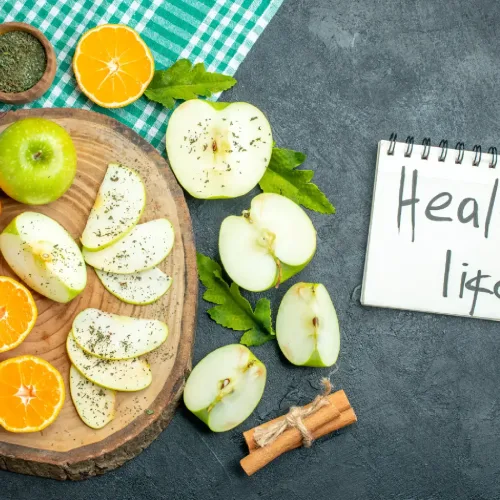In physical chemistry, precision is essential for discovery. One of the most effective tools for discovering chemical properties is ultraviolet and visible (UV-Vis) spectroscopy. This method not only breaks down molecular structures, but it also studies reactions as they occur. As a result of its flexibility and precision, UV-Vis spectroscopy plays an important role in both research and industry.
UV-Vis spectroscopy works by measuring how a solution absorbs or transmits light in the ultraviolet and visible ranges. By carefully analyzing how light interacts with molecules, scientists can determine the composition and concentrations of a sample.
Importance of UV-Vis Spectroscopy in Physical Chemistry
In physical chemistry, UV-Vis spectroscopy helps researchers to understand molecular behavior and track reaction rates. It provides essential data to chemists, engineers, and environmental scientists.
Absorption and transmittance are the two basic principles of UV-Vis spectroscopy. When a sample passes through a light source, many wavelengths are absorbed while others are allowed to pass through. Based on the absorbed wavelengths, scientists can determine chemical properties and concentrations.
Applications of UV-Vis Spectroscopy

1. Quantitative Analysis
UV-Vis spectroscopy is widely used for quantitative analysis. Researchers use the Beer-Lambert law to relate absorbance to concentration. This method allows concentrations to be accurately determined during experiments. This is essential for controlling variables in drug assays and chemical reactions.
2. Qualitative Analysis
UV-Vis spectroscopy can also be used in qualitative analysis. Because each compound has a different absorption pattern, it is possible to identify unknown substances. The absorption of functional groups offers insight into molecular structure, chromospheres, and possible auxochromes.
3. Structural Characterization
In the study of chromospheres and conjugated systems, UV-Vis spectroscopy is invaluable. By examining electronic transitions, scientists can figure out structural details, such as bonding and electron configuration.
4. Kinetic Studies
For kinetic studies, UV-Vis spectroscopy helps measure reaction rates. By looking at the change in absorbance over time, researchers can calculate how quickly the reaction occurs. This technique is important for understanding reaction mechanisms.
5. Environmental Analysis
UV-Vis spectroscopy can also be applied beyond the laboratory to environmental analysis. It can detect changes in water quality by monitoring pollutants and contaminants. It is also useful in controlling air pollution and food safety, identifying harmful chemicals in the environment.
Techniques and Instrumentation

UV-Vis Spectrophotometers
There are two types of spectrophotometers, single-ray and double-ray. The single ray reads the sample directly. The double ray compares the sample to a reference for lesser delicacy. Both have three main corridors a source of light, a monochromator that filters the light at each wavelength, and a sensor that measures the absorbed or transmitted light.
Sample Preparation
Accurate results depend on proper sample preparation. The solution must be prepared precisely, and choosing the right cell is essential because path length affects the interaction of light.
Data Analysis
Once the data is collected, scientists move on to spectral interpretation. From the absorption peaks, chemical components can be separated. Quantitative calculations help determine the properties and concentrations of the sample.
Importance of Wavelength in Spectroscopy
Hence, the correct choice of wavelength is important in UV-Vis spectroscopy. A compound absorbs light at certain wavelengths. Thus, a suitable wavelength will provide accurate data. Such a choice will determine the clarity and accuracy of the results.
Samples absorb certain wavelengths of light when exposed. This is impacted by the molecular structure of the sample. The absorbed energy will reflect clear information about the concentration and composition of the sample. In quantitative analysis, the wavelength with maximum absorption is preferable in terms of increased sensitivity and accuracy. Otherwise, there will be inaccuracies if the wrong wavelength is selected.
Another feature is how responses vary with wavelength. Shorter UV wavelengths excite electrons in small molecules, while longer visible wavelengths penetrate deeply into larger conjugated systems. In an experiment, through proper wavelength selection, the chemical behavior will closely reflect the actual conditions, analyzing both qualitatively and quantitatively.
Advantages and Limitations
A. Advantages and Limitations
UV-Vis spectroscopy offers many benefits:
- Non-destructive: It does not destroy the sample; so measurements can be repeated.
- Versatile: it is applied in pharmaceuticals, environmental science and much more.
- Economical: The equipment is cheaper than other methods, such as Nuclear Magnetic Resonance (NMR).
B. Limitations
However, the technique has some drawbacks:
- Sensitivity: It struggles to detect very low concentrations.
- Interference: Other substances in the sample may interfere with the results.
- Structural detail: It provides limited information about complex structures.
Conclusion
UV-Vis spectroscopy remains a cornerstone in physical chemistry. Its ability to precisely analyze molecular structures and reaction rates makes it indispensable for scientists in many fields. From research to industry, this technique provides an efficient and cost-effective way to explore the chemical world.
References
- American Chemical Society
- Royal Society of Chemistry
- National Institute of Standards and Technology (NIST)




